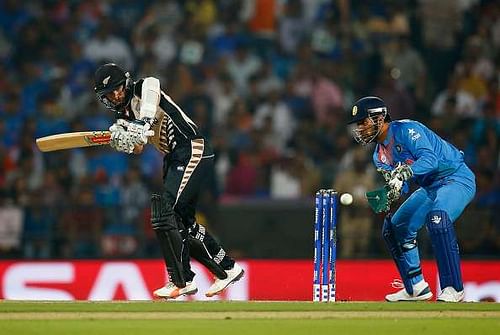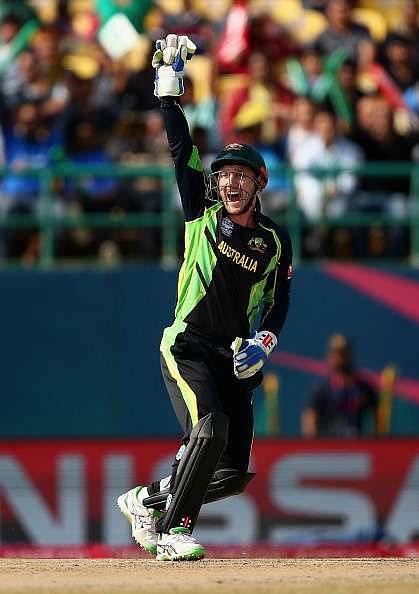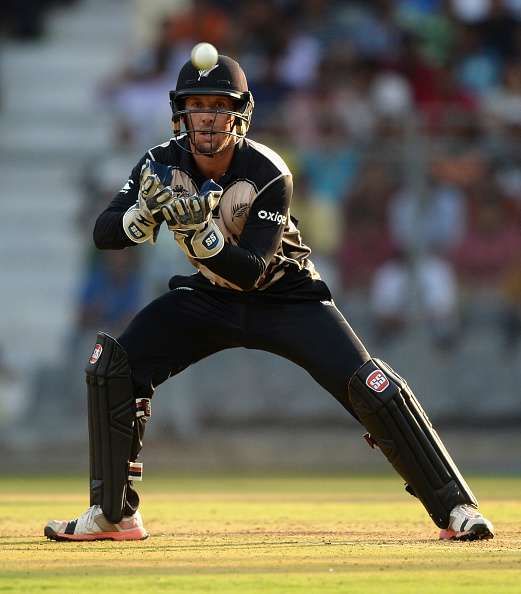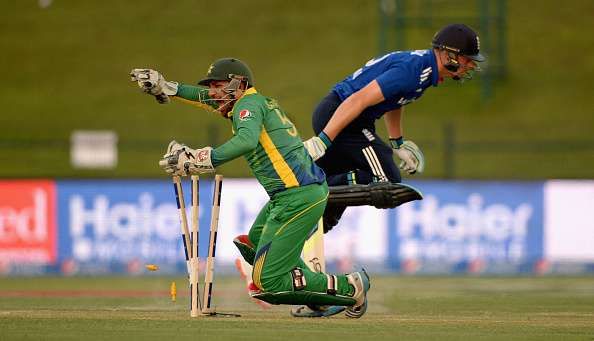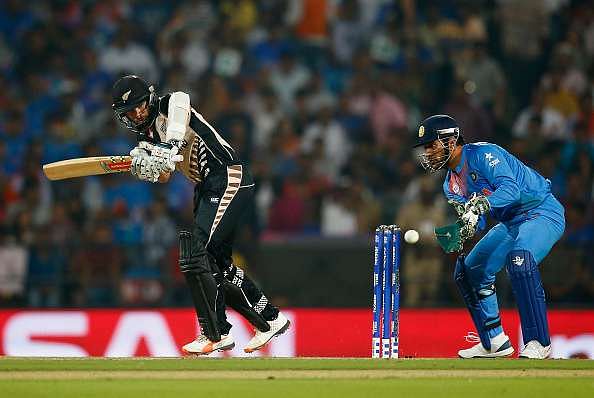
Specialist wicket-keepers in T20: A new realization?
When Twenty20 cricket first exploded on the international scene in 2007 (I consider the inaugural World Championship as the start of a mega phenomenon), the onus was mostly on the batsmen. After all, with a shortened version of the game, you could expect them to bring out the artillery in terms of sixes and boundaries.
Nearly a decade down the line, things, and thought processes, have changed considerably. Bowlers have become sharper with their armoury, fielders even more agile, and batsmen have replaced brutal savagery with a more refined version (old warhorse Chris Gayle is the notable exception!) – blending raw power with traditional cricket.
There is a fourth category of players – specialists in their own right. I call them so because their area of expertise doesn’t change regardless of format. These are the ones who don the big gloves for 20 overs, crouch low behind the stumps, and encourage both bowlers and fielders alike in their own chirpy way.
Wicket Keepers – the technical term for this bunch of cricketers – are a very rare breed. Because their position in the batting order is akin to a floating exchange rate on the forex market, they are sometimes unnoticed after their side has done the fielding part.
However, when the side is struggling to put a winning total on the board, or chase down a mountain of runs in the second essay, it's these guys who need to use the willow to devastating effect in a very short amount of time. That’s one reason why you need a specialist keeper in the side.
So why are teams realizing the necessity of these guys right now in the ongoing World Twenty20? Let's take a look:
These guys don’t mess around – they get on with the job at hand from the word go
The moment the team steps on the field, the wicket keeper is immediately up and running. Their energy is boundless – a few stretches here and there, and they're in business. Someone like Peter Nevill is absolutely vital for the Australian side because he gets on with the task at hand. Though I haven’t seen much of him, his reflexes and skillsets behind the wicket look to be really sharp.
Nevill is just one of the multiple specialist keepers present in the overall international squads vying for Twenty20 glory. Bangladesh's Mushfiqur Rahim is a forever chatty presence while our very own Mahendra Singh Dhoni exudes a calm confidence belying his years. In the latter’s case, it is a dual role – keeper and captain – however, he has made his mark as both.
Having a specialist in this role offers a team two distinct advantages. One, they can plug up runs behind the wicket to a large extent (at least within their own patrolling area). Two, their constant chatter plays a double role – pepping up their own side while trying to get inside the opposition batsman's head. A part-time / occasional wicket keeper can do so only for a limited period of time.
In a shortened format of cricket, these aspects of a pure wicket-keeper are enough to lift a side and give them the support they desperately need.
They have a 360-degree view of the entire ground
One of the reasons why Abraham Benjamin de Villiers is quite successful in the Twenty20 format is because of his ability to have a 360-degree view of the whole ground. It is a trait common to all wicket keeper batsmen – this allows them to understand exactly where the fielders are placed, and which scoring areas will be of maximum benefit to their respective sides.
Just the other night, while chasing South Africa’s formidable 229 at the Wankhede, England maverick Jos Buttler played some very outrageous shots, including the scoop. How did he do that? Simple – he utilized both his hitting powers and knowledge of field positions to pick his spots.
Now, even a well-set batsman can certainly do this. But the full-circle view of a cricket ground, from the middle of the 22-yard strip in the centre, is a skill only a wicket keeper is blessed with, especially when he is batting. It is what sets apart a de Villiers from a Kohli, or a Quinton de Kock from a Hashim Amla, for example.
They can hit the big shots when needed, or graft when the situation is dicey
When you have to set a target for the opposition and ensure that it is sufficient enough to be defended, you look to your openers and upper middle order to fire in unison. A few quick wickets, and you're wracked with worry – half of your side is back in the dugout and you’ve only just gone past 100.
In walks your wicket keeper, and proceeds to not only run hard between the wickets but also lands a few lusty blows of his own. It is a calculated assault that serves a threefold purpose - push the score higher, take pressure off the well-set partner / new batsman at the other end, and valuable time spent out in the middle.
In this World Cup edition, we have seen a few such performances. New Zealand’s Luke Ronchi scored a brisk 21 off just eleven balls to help his side cross the 125-run mark against India in their opening game at Nagpur.
A lower order thrust is sometimes rare, but when you have a wicket keeper opening the innings and setting the pace from ball one, you know what his worth is. South Africa’s Quinton de Kock, and former Aussie gloveman Adam Gilchrist, too, are players that fall in this section.
Pakistan keeper Sarfraz Ahmed, too, is another young player who combines both grafting and attacking strokeplay with aplomb. He lends solidity to an otherwise shaky batting lineup (given the 2009 champions’ hot and cold performance in the World Cup so far). Ahmed's showing in the ongoing tournament might not exactly set the stage on fire, but the team think-tank’s move to bring in a specialist gloveman has given the side some balance.
Summary
Twenty20 is a game of complete uncertainties, with fortunes fluctuating wildly each ball. On Indian pitches, you will expect to play specialist batsmen, all-rounders and bowlers. To round out the balance of the side, you need an expert filling the role of a wicket-keeper, and teams are just beginning to realize that fact.
In the long term, this is an excellent step ahead.
